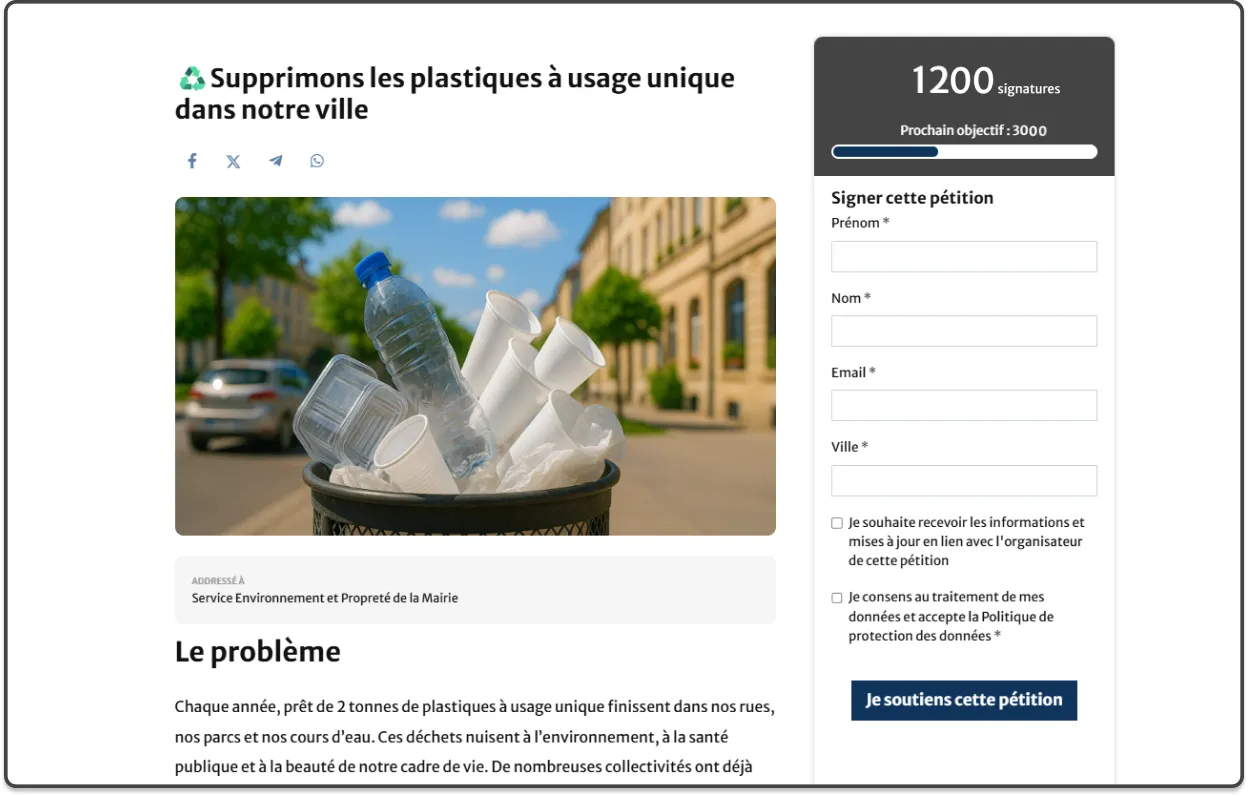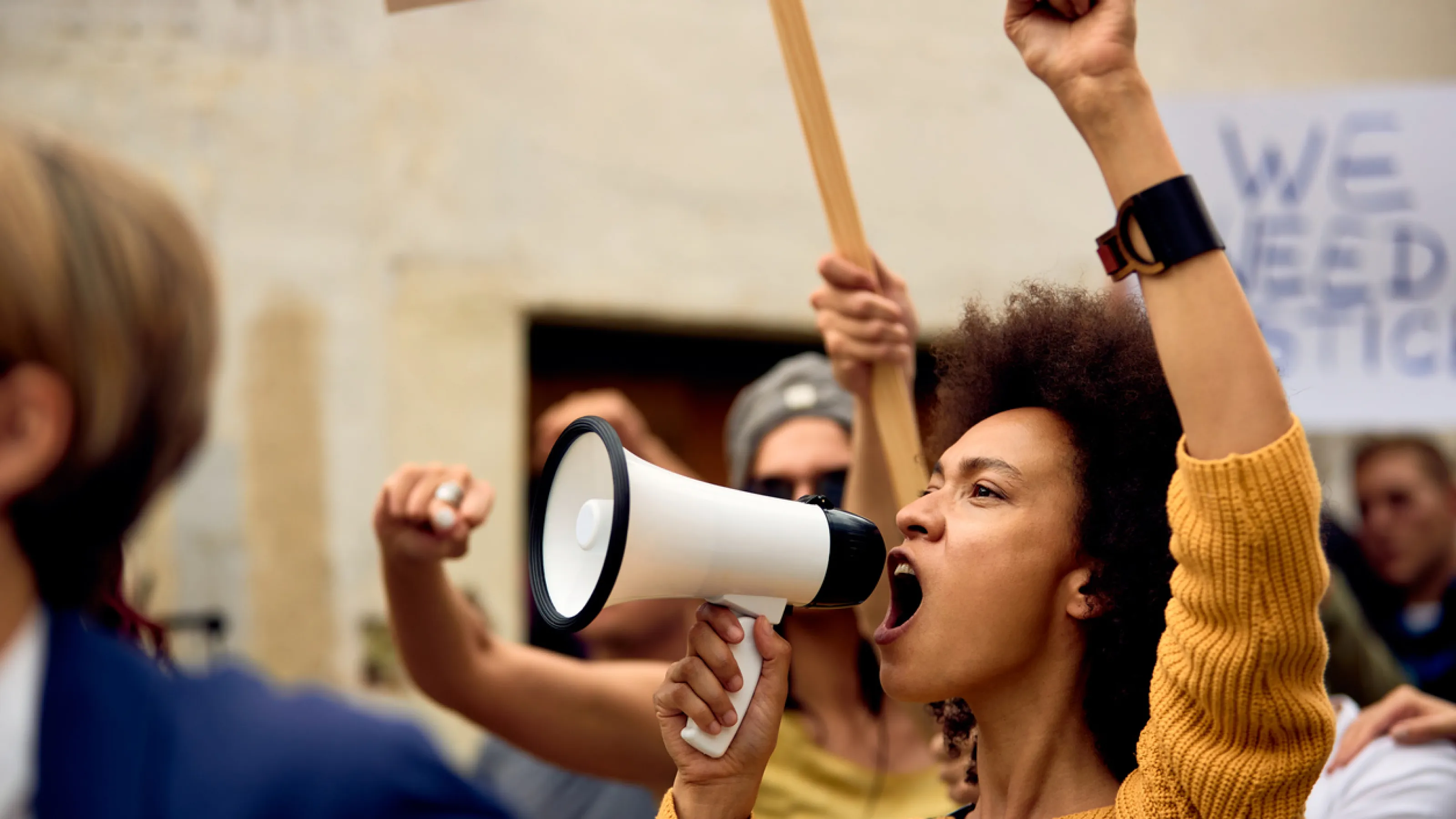Starting a petition is often one of the first move when you want to make things happen.
It’s a simple, quick, and accessible action for everyone.
A good idea, a well-written text, a few shares... and mobilisation begins.
But in practice, not all petitions achieve the same success. Some gather thousands of signatures, while others remain in the shadows.
The difference lies not only in the cause defended but also in the way the petition is designed and carried forward.
To increase your impact, here are some proven best practices and common mistakes to avoid.

🫴 A clear, precise, and concrete demand
The first key to an effective petition is clarity.
Before writing anything, ask yourself two simple questions:
👉 What exactly are we asking for?👉 Who are we addressing?
A successful petition doesn’t try to “change the world” in one sentence. It aims for an action that is realistic, concrete and addressed to a clearly identified person or institution. The more precise the demand, the more credible it is, and the more signatories know exactly what they are supporting.
Example: “We ask the city council to plant 200 trees downtown by 2026” is much more mobilising than “Save the planet.”
This level of precision is also what will allow you to give a concrete and measurable follow-up to your action.


🎯 A clearly identified recipient
A petition without a recipient is a bit like a message in a bottle. It can drift for a long time... without ever reaching its target.
For a petition to carry weight, it must target a person or institution capable of making a decision.
This precision gives the mobilisation a clear direction.
Don’t hesitate to mention the recipient in the title or the first paragraph. This immediately sets a concrete framework: signatories know exactly who their voice is addressing.

💬 A story that creates connection
A petition is not just a tool. It is also — and above all — a collective story. People sign because they are touched, concerned, inspired. A few well-chosen lines can turn a technical demand into a shared cause.
Explain why the issue matters to you. Show what’s at stake. Illustrate what would change in daily life. The more human, accessible, and relatable the message, the more it inspires people to get involved.
“Every summer, temperatures rise in our downtown. By planting 200 trees, we create cool islands, protect biodiversity, and make our streets more pleasant to live in.”
This short, sincere, and vivid story often has more power than a long speech.

✍️ Signing should be simple
We often forget, but the way a petition is presented matters a lot. Even a strong cause can fail if signing takes too long or becomes tedious.
An effective petition can be signed in just a few seconds: a short form, a clearly visible button, and clear confirmation. Every click should feel natural.
That’s the spirit in which we designed the Petition feature on Citipo: to minimise friction and allow anyone to support a cause in an instant, wherever they are.
Fewer technical barriers mean more signatures — and more impact.

🌐A petition doesn’t spread on its own: make it live
A petition, no matter how well written, won’t spread on its own.
For it to truly take off, you need to give it visibility. There’s no shortcut: you need to talk about it, share it, and actively circulate it.
From the moment it’s launched, send the link to your contacts, post it on your social media, include it in your newsletters or email signatures.
- Talk about it at your events, in the field, within your community or activist circles. Every share counts.
- The more you multiply distribution points, the more your petition gains reach and legitimacy.
- A petition is not just a page online: it’s a tool to rally a community around a cause.
If you don’t actively carry it, it may go unnoticed. If you push it, it can become a real lever for change.

📣 A petition is a beginning, not an end
A good petition doesn’t end with collecting signatures. It’s the starting point of a broader mobilisation for your campaign or organisation.
From the moment it’s created, you need to think about what comes next:
- 👉 What will you do once the signatures are collected?
- 👉 When will you officially hand the petition to its recipient?
- 👉 How will you keep signatories informed of the campaign’s progress?
Planning this “chapter 2” from the start gives your approach credibility and shows your community that each signature has real value.
Want to take action by launching a petition? Contact our team now.
